In a variety discount sector where rivals are suffering, Home Bargains keeps getting better and better. So what is it doing right?
We visited two of its flagship stores to find out
The variety discount sector is in a slump. Poundland is up for sale after three consecutive quarters of downward same-store sales. B&M is also struggling, issuing its second profit warning of 2025 in February, coinciding with the departure of former CEO Alex Russo, and this week it posted full-year like-for-like sales down 3.1%. As to Poundstretcher, its woes stretch back even further.
All of which leaves Home Bargains as a glorious exception to the rule. Its latest accounts note how “increased contribution from existing stores” helped turnover grow 11.7% to £4.2bn in the year to 30 June 2024. And the privately owned Home Bargains is still quietly doing the business, with operations director Paul Rowland confirming to The Grocer that it continues to deliver positive like-for-likes in an exclusive tour of two flagship stores.
So, what’s Home Bargains doing differently?
The clues are not hard to find, with one being at the location of the first store in Speke: a Home Bargains café, something not found in Poundland or B&M stores.
In-store cafés are becoming rarer, with supermarkets also stripping them out, most recently Morrisons in about 50 locations – a trend that surprises Rowland, a former Asda senior director, because Home Bargains is finding them a draw for customers and is opening more.
Cafés are not new for Home Bargains – it opened the first more than 10 years ago – but they are now seen as part of the optimal format and will be in all new stores, space permitting. It currently has 35 across its estate, and plans to add about 10 a year.
The offer is simple: the menu includes sandwiches, baps and cakes, and low prices: £1 for a cup of tea and £1.69 for a coffee.
That optimal format is largely represented here, in a 30,000 sq ft retail park unit that first opened in 2019, one of two stores the usually publicity-shy discounter has agreed to show The Grocer around.
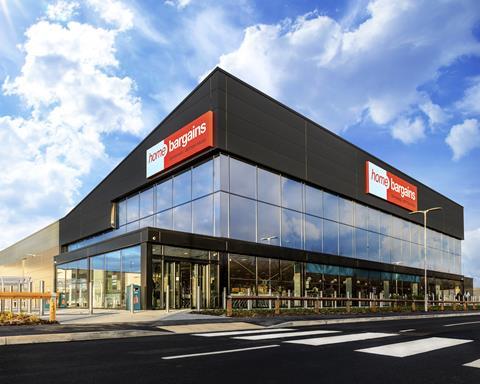
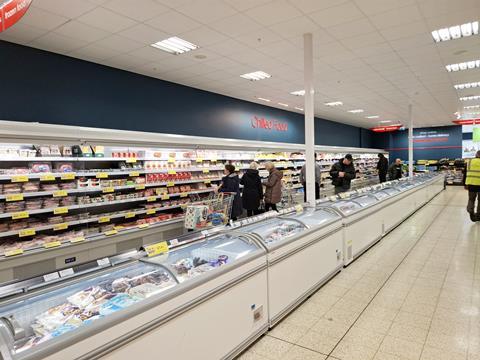
The Speke store is one of about 150 stores of this size across an estate of 630. It is not the largest, with some extending to 40,000 sq ft, but it showcases much of what is working best, including one of the discounter’s 75 garden centres. That’s still some way off B&M’s roughly 200 garden centres in a 770-store estate, but Home Bargains plans to put down 15 more a year.
For Rowland – who spent 17 years at Asda, from store manager to senior head office roles including director of small formats – cafés and garden centres are a reason some people will choose to visit one shop over another.
Read more:
-
B&M boss Alex Russo to step down as chain issues another profits warning
-
Home Bargains tackling theft with AI cameras that spot unscanned items at checkouts
-
Home Bargains starts construction on new ‘highly automated’ Doncaster DC
-
The wheels have fallen off B&M’s retail wagon – can it get back on track?
And while Home Bargains doesn’t do analytics and surveys – nor marketing or paid-for advertising – everyone in the businesses is close to the shops, so knows what’s working. The retailer is as shop-focused as any Rowland has worked for, he says, in a list that also includes Iceland, where he was stores director for two years before joining Home Bargains in 2020.
That shop focus comes from the top – namely Tom Morris, who founded Home Bargains in Liverpool in 1976. He still owns it and remains involved day to day.
Consistency is key
The son of a shopkeeper, Morris has retail in his blood. He’s a great buyer who has recruited great buyers – including director Daniel Sowden – and he teaches people to be great buyers, says Rowland. His continual presence gives Home Bargains a consistency to the principles on which it was founded – top brands at bottom prices.
It means Home Bargains is unlikely to have its assortment disrupted by new ranges from an owner largely operating in a different retail sector, as has befallen Poundland under Warsaw-listed parent Pepco Group.
It is one of the defining features of Home Bargains in a retail category that people take to be more homogenous than it is. Asda, Tesco and Morrisons, for example, all have much more in common than could be said for competing retailers in the variety discount sector, says Rowland.

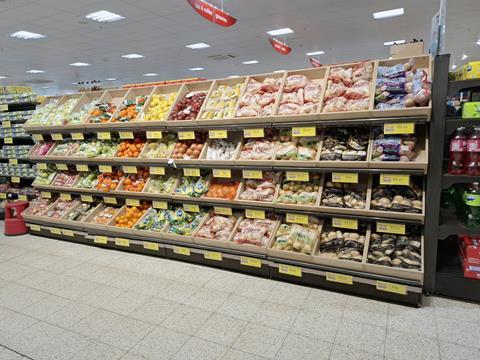
Lidl and Aldi are also much alike in format, but if you went to Poundland in Speke you would find far less similarity with this Home Bargains in range and space allocation, he believes. While people most closely relate Home Bargains to B&M, when you slow down to take a look you’ll find the latter sells more imported general merchandise, while Home Bargains has more fresh food. In the Speke Home Bargains, chilled and fresh food occupies two aisles, with a row of chest freezers running down the middle, and a bakery section.
B&M seemed to go for frozen food a few years ago, but now Rowland barely sees a new B&M store with frozen in it. Instead, there tends to be just one chiller, with bits and pieces of essentials and snacking on the go.
The future of food in Home Bargains
But this is not Home Bargains’ latest thinking in food. For that we visit North Liverpool Retail Park, next to its HQ in Axis Business Park. In the store here, which opened in 2017, the space devoted to chilled, frozen and fresh food is closer to the size of a core Iceland store, or an Iceland concession in The Range, with three aisles and two rows of chest freezers.
Big brand names dominate in the chillers, but there are also exclusive brands, such as frozen New Yorker Diner chicken wings.
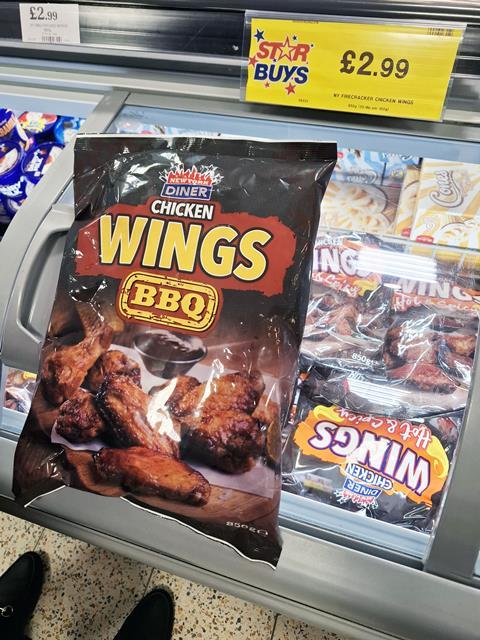
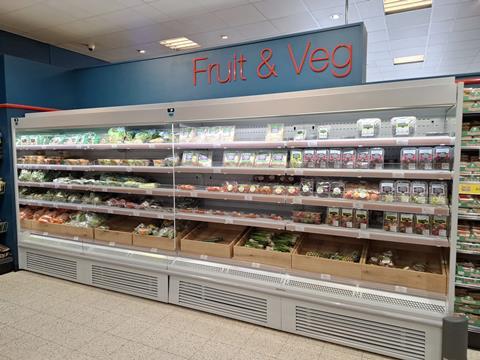
And while the lion’s share of Home Bargains’ assortment is brands, in line with the mission, its own-label offering stands for good quality and exceptional value, Rowland says.
Fresh fruit and veg has also been moved from a side aisle display to a fresh market-style wooden stand at one end of the space, under a banner saying ‘Meadow Hill Fresh Groceries’ – a Home Bargains trademark.
The idea of moving fresh fruit and veg to a bigger, wooden fixture is to evoke a more premium feel. Bakery is also showcased in a wooden cabinet, stocked with sweet treats, rolls and baguettes. A three-pack of demi baguettes costs 79p, with the prices marked on grey shelf-edge labels – a more muted choice than the bright colours typically used to signpost value in discount retail, including in Home Bargains’ ‘Star Buy’ labelling elsewhere.
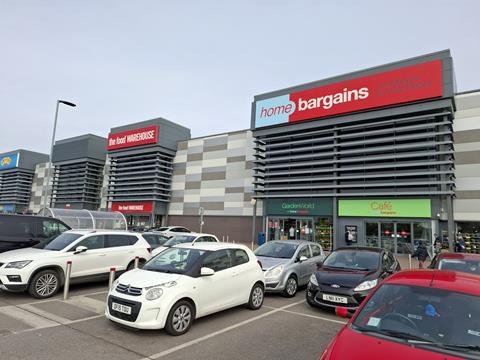
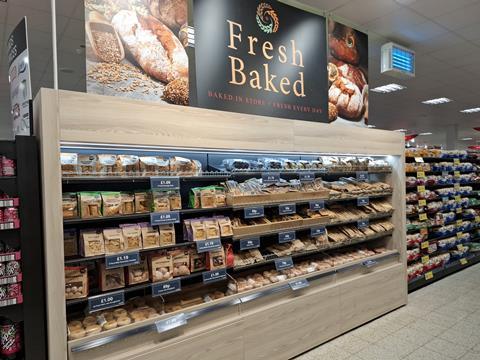
Home Bargains uses a ‘bake-off’ solution, with bread supplied by Vandemoortele in Belgium and re-baked in store. It introduced its first bakeries about seven years ago and now has about 100, in an accelerating rollout, Rowland says. They help with repeat business and frequency of shop, as does food in general, “because we eat more than we decorate”, he adds.
This is all in addition to ambient grocery in adjacent aisles, including an aisle of beers and wine.
The last chiller before the checkouts contains prepacked sandwiches and other food for now. There’s no meal deal but prices are low enough to make one unnecessary, says Rowland, with sandwiches from £1.09.
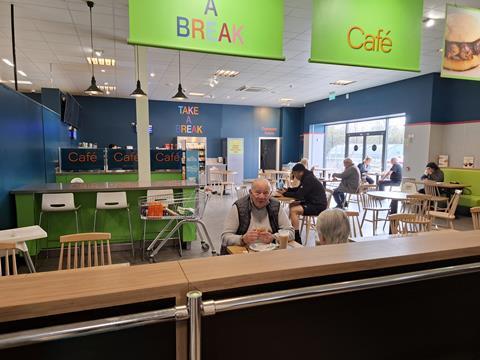
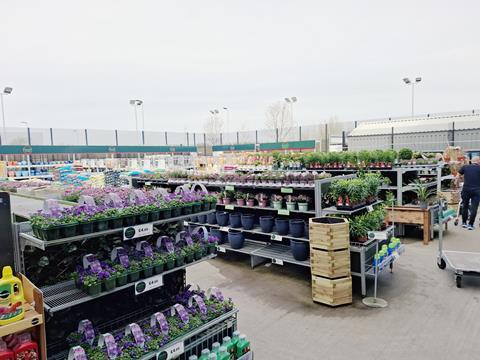
The fresh and chilled food positioning, at the end of the shopper’s journey, is one of the macro elements of store layout that is fixed, along with household, health and beauty always occupying the first aisle.
On a more micro level there is freedom for store managers and area managers to arrange things as they work best. Home Bargains has no planograms and no merchandise department, and it operates with the loosest merchandising guidelines, which, believe it or not, is good for efficiency, says Rowland.
No merchandising guidelines
The ability to do what you want at the shelf edge helps maintain a high rate of one-way stock, meaning product moves from back of store to front, not the other way.
It also helps with availability, as does automation in Home Bargains’ warehouses. It has three distribution centres – one here in Axis Business Park, another in Amesbury and a third that recently opened in Omega Business Park in St Helens. A fourth, in Doncaster, began construction in March and is due to be operational by 2028. The DCs supply all Home Bargains’ range including fresh and chilled food.
All use a high level of automation, though the solutions differ from site to site. The latest, in the one million sq ft Omega facility, is in partnership with picking technology provider Witron, and is the best automation solution Rowland has seen. It means a significant amount of product is not touched by a human hand between entering the system and leaving it.
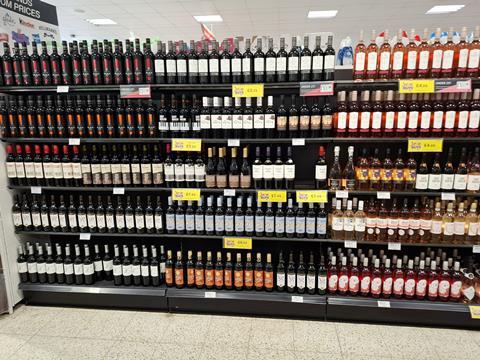
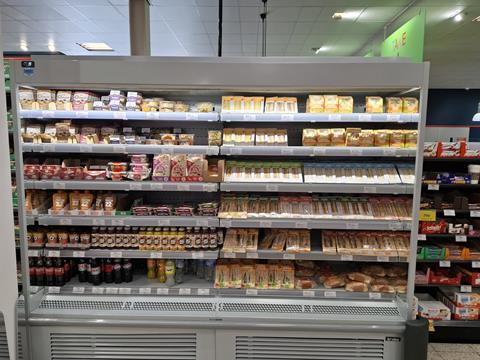
The DCs also fulfil Home Bargains’ online sales of general merchandise and ambient food, a small but enduring part of the business, having been established more than a decade ago.
It does OK, but it’s not Home Bargains’ biggest ambition, says Rowland. That is to open more stores – between 30 and 50 a year, with some of those being relocations – and eventually grow the estate to between 800 and 1,000 outlets, as stated in the accounts.
Getting on the best retail parks is tough, says Rowland. But you can always build the retail park – with yourself as anchor and units let to other retailers.
In Speke and North Liverpool, Home Bargains is the anchor, with The Food Warehouse and Farmfoods as neighbours. They may be competitors but the three feed off each other’s footfall, all attracting shoppers who are looking for a deal.
About 50% of new Home Bargains stores are buy and build – buy the land, build the store – on retail parks or standalone.
And the business is fortunate enough to be able to afford investment. But it won’t rush into opportunities to acquire sites out of vanity, or be distracted, says Rowland.
It’s a cautious approach, but that might also be something that sets Home Bargains apart.
B&M and Poundland both saw an opportunity in Wilko’s collapse in 2023, taking on about 50 and 70 stores respectively. And both are revisiting their offers, while Home Bargains has got theirs taped.
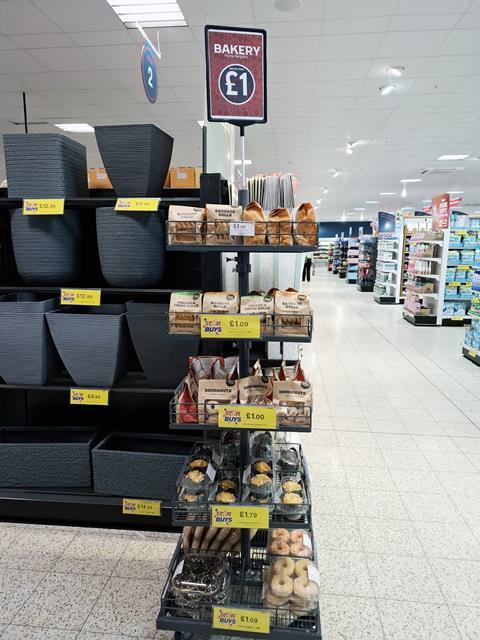




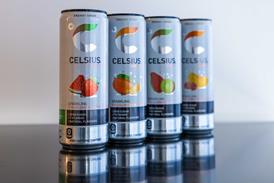
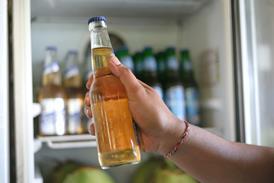

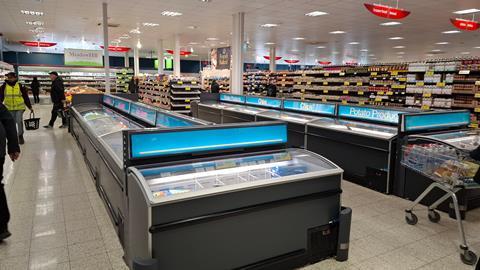





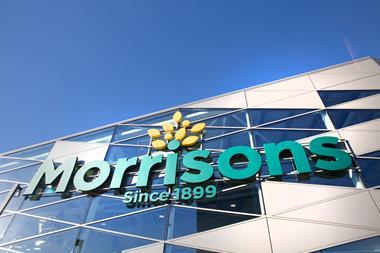






No comments yet